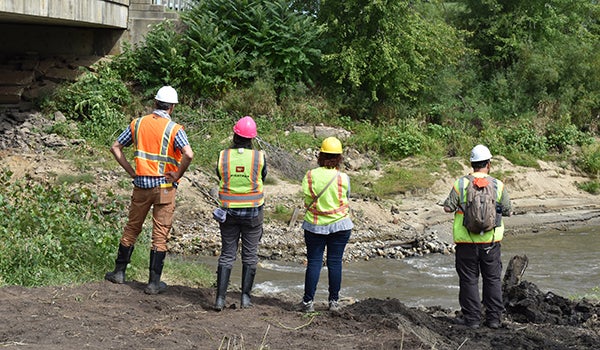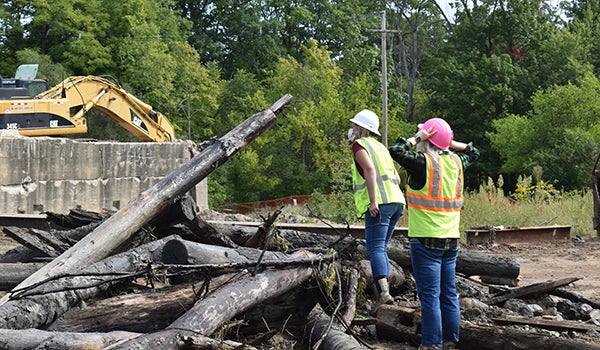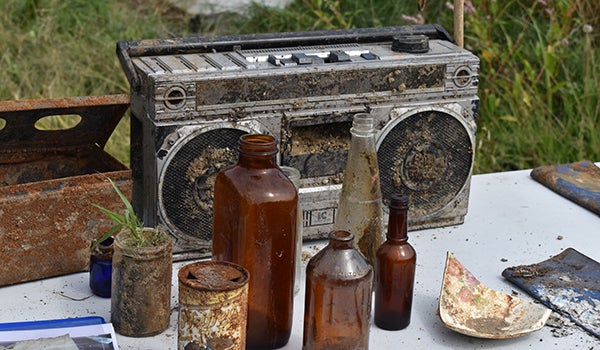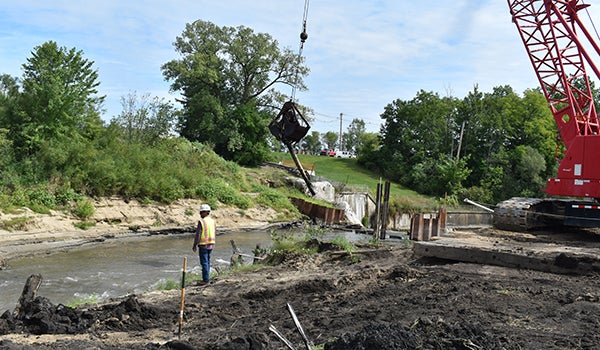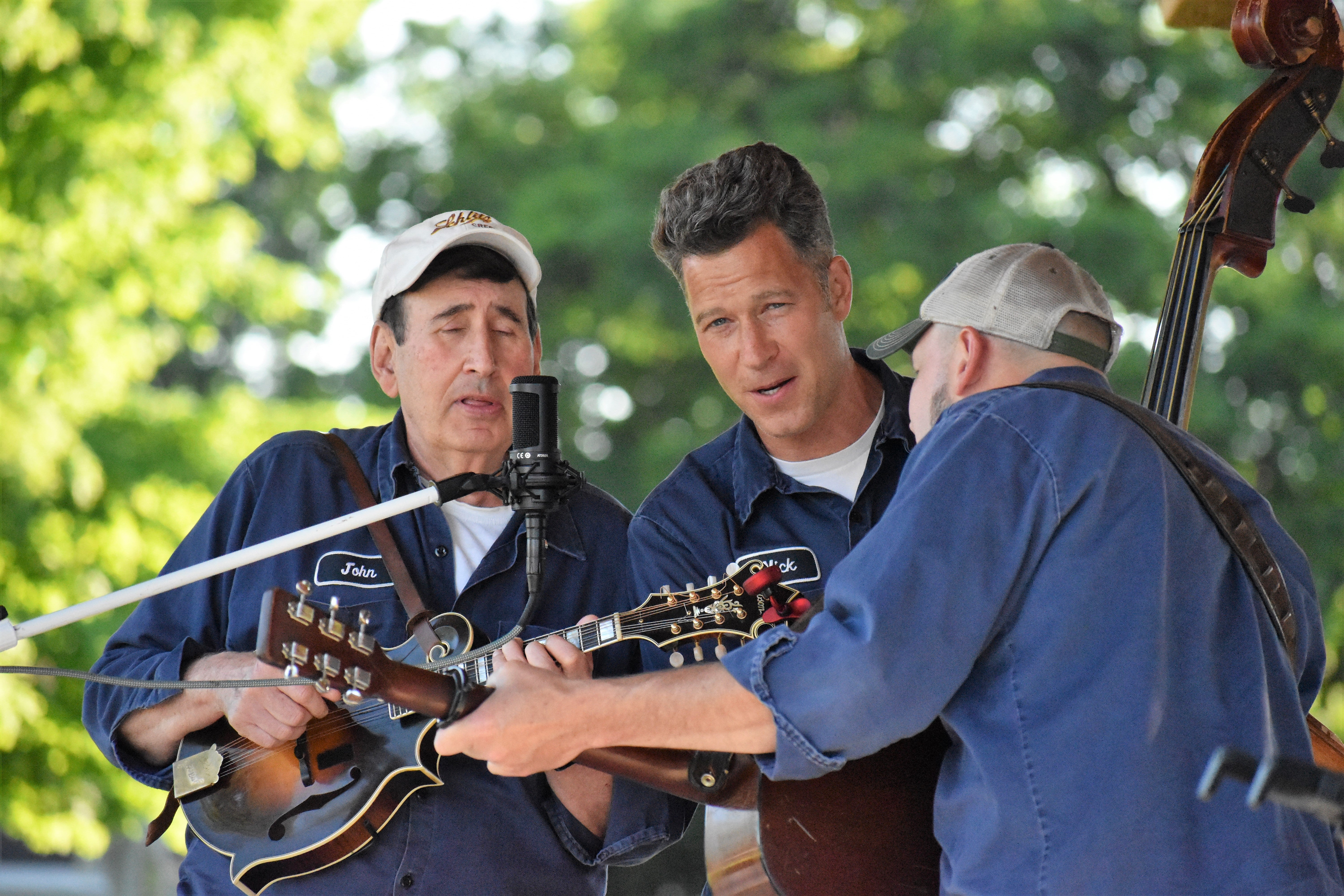Pucker Street Dam removal unearths one of first dams in region
Published 8:59 am Tuesday, September 15, 2020
|
Getting your Trinity Audio player ready...
|
NILES TOWNSHIP — A few spectators parked their cars on the side of M-51, across the Dowagiac River from Losensky Park, to watch a crane pulling lumber out from the riverbed on Friday.
The park remains closed as the Pucker Street Dam removal and riverbed restoration work continues, but Friday piqued the interest of local historians and archeologists. The lumber being pulled from an area about 30.5 meters upstream from the Pucker Street Dam were parts thought to be a part of the Eli Ford Legacy Dam.
“The joints are indicative of the pioneer, hand hewn style,” said James Ingermann Heimlich, historian and archeologist who authored the “Archeological Documentation of the Proposed Removal of the Eli Ford Legacy Dam” report with Orbis Environmental Consulting.
Orbis Envionmental Consulting was brought in to work with Wightman, the engineering firm working with the city of Niles on the Pucker Street dam removal. Orbis documented the legacy dam and recorded it as an archeological site. It has been recommended eligible for the National Register of Historic Places.
Heimlich said there probably is not enough left of the dam to recreate it, however, he found the importance in finding the dam to be significant.
“All of this region developed because of this dam,” he said.
In the report written by Heimlich, he said that based upon the research, paired with the physical evidence of the dam found, he believes it to be the same dam that was built by Eli Ford in 1828, and was in use for the next 100 years. In 1928, the Pucker Street Dam was constructed out of concrete.
“The purpose of the [Eli Ford] dam was to supply water to Eli Ford’s gristmill and sawmill,” according to Heimlich’s report. “Research shows that this dam and mill were the first in Berrien County, and the first gristmill in the western region of Michigan. The dam and mill predate the establishment of the city of Niles, and has contributed greatly to the settlement of Niles and the region.”
Heimlich said the early pioneers likely chose the Dowagiac River, as opposed to the St. Joseph River, because it would be easier to hold back and harness the power for the mill. The Dowagiac River presented a more narrow river, with a flow easier to hold back to construct the dam using horses an manual labor.
The planks that were pulled out of the Dowagiac River were still very wet, and would need time to dry before they could be properly inspected. Local historians and archeologists were intrigued by the tongue and groove carved ends of the logs being dropped on the shore.
“While they are pulling [parts of the Eli Ford dam] out, they are finding other artifacts that are coming with it, and trying to set aside any of those,” said Molly Kruck Watson, assistant director of the Niles History Center. “Some of those items will be coming back to the Niles History Center with us.”
Some of the other items that had come out of the river were glass bottles, signage, an adding machine and a boombox.
The items the local historians are able to interpret and preserve will become a part of the collection at the history center.
“It’s cool to see this history uncovered,” Watson said. “We’ve done research on the early industry here in Niles. You hear about these old dams, and they are super important as we’ve progressed as a community. To actually see a piece of that is really incredible.”


